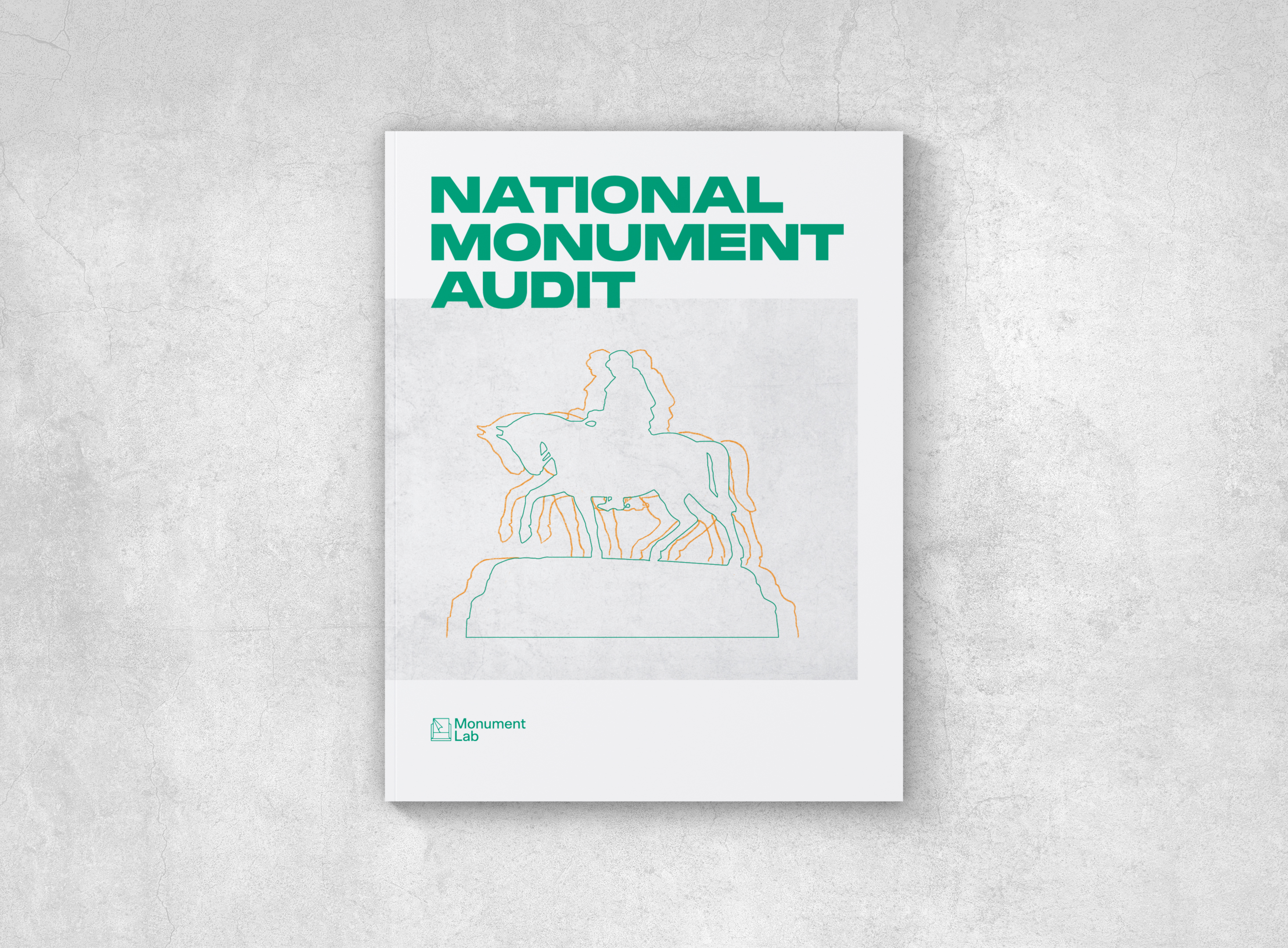
Join Monument Lab for a deep dive into monument data. We will explore methods from the audit and other monument tracking projects, as well as themes in monument record keeping and the legacies and limitations of cultural heritage data. Discussion with Q&A to follow. Registration required. This event will be a live and recorded Zoom Webinar. Closed captioning will be made available during the event.
The suggested donation for this event starts at $1 with an option to contribute any additional amount to support Monument Lab's mission. Support Monument Lab at https://monumentlab.wedid.it/.
Panelists:
- Laurie Allen, Senior Research Advisor, Monument Lab & Co-Director, National Monument Audit (Moderator)
- Sue Mobley, Director of Research, Monument Lab & Co-Director, National Monument Audit
- Brian Foo, Lead Data Artist, National Monument Audit and Data Visualization Artist, American Museum of Natural History
- Sara Snyder, Head of External Affairs and Digital Strategies, Smithsonian American Art Museum and Renwick Gallery
The National Monument Audit, produced by Monument Lab in partnership with The Andrew W. Mellon Foundation, assesses the current monument landscape across the United States. Monument Lab’s research team spent a year scouring almost a half million records of historic properties created and maintained by federal, state, local, tribal, institutional, and publicly assembled sources. For our deepest investigations, we focused on a study set of approximately 50,000 conventional monuments representing data collected from every US state and territory. The National Monument Audit allows us to better understand the dynamics and trends that have shaped our monument landscape, to pose questions about common knowledge about monuments, and to debunk falsehoods and misperceptions within public memory. The National Monument Audit is meant to inform Mellon’s landmark Monuments Project, a $250 million investment designed to “transform the way our country’s histories are told in public spaces and ensure that future generations inherit a commemorative landscape that venerates and reflects the vast, rich complexity of the American story.”
